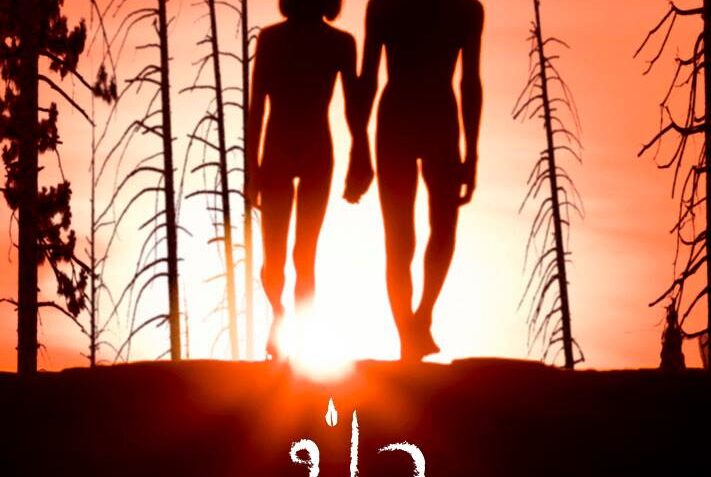
Paul Spurrier is a man with his feet in two worlds. He is a native of England but has lived in Thailand for 12 years. He has been in the film industry since he was eight years old as a child actor.
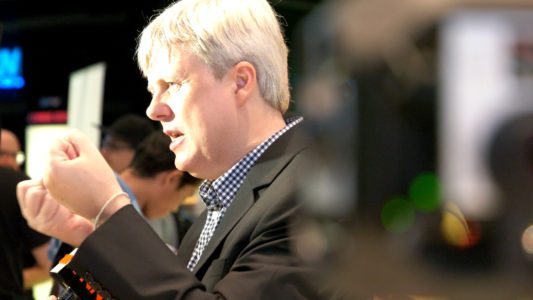
‘The Forest’ is a Thai film taking a modern and thoughtful take on traditional Thai ghost mythology. It premiered at the Cinequest Film Festival in San Jose and has gone on to win the Golden Dragon for Best Director at the Ferrara Film Festival and the NETPAC Award at the BIFAN Festival, Korea. It has also received very positive reviews. As both a Director and Cinematographer,
Paul Spurrier, has worked on both Hollywood and Thai films, it was clear from the start that ‘The Forest’ required a different approach.
Spurrier’s first film ‘Underground’ was shot on Super 16, and he liked the look. It would provide a depth-of-field shallow enough to not look like ‘video,’ but deep enough to hold the actors’ natural
movements. Spurrier also would be able to use his own treasured Arri Zeiss Prime lenses, which would help give an overall slightly softer, more filmic look.
Many of the locations, including mountains, deep jungle, and waterfalls could not be reached by car. This would necessitate a compact camera package and a minimal crew.
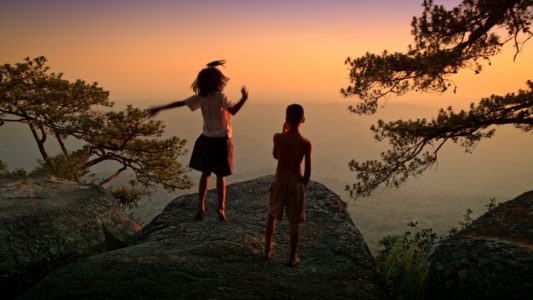
Spurrier investigated a camera that would provide a picture quality sufficient for big-screen presentation, but small enough to be carried on 15-mile treks.
The obvious choice was a DSLR. But there were clear limitations: Firstly, there were few DSLRs on the market that could record in RAW, meaning that the images would be compressed by the cameras’ internal codecs. The inability to record in RAW and the limited dynamic range would make it hard to capture the highlights in the bright skies of Thailand.
Also, while the shallow-focus look is somewhat fashionable, Spurrier wanted more depth of field.
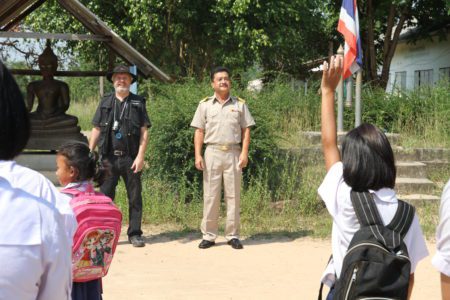
Firstly, he didn’t want backgrounds to blur into total softness. But there was a practical element too. There was no room on the crew for a focus-puller. The shallow-focus look would risk shots being out of focus. Spurrier’s first film ‘Underground’ was shot on Super 16, and he liked the look. It would provide a depth-of-field shallow enough to not look like ‘video,’ but deep enough to
hold the actors’ natural movements.

Spurrier also wanted to be able to use his own treasured Arri Zeiss Prime lenses, which would help give an overall slightly softer, more filmic look.
The Blackmagic Pocket Cinema Camera has a Super 16 size sensor, and recorded RAW, so was an obvious candidate.Its tiny form would also make it an ideal camera for carrying up mountains.
But Spurrier was initially worried about making an entire film on a camera the size of a cigarette pack. Could it give the quality that he wanted? So he set about testing it.
I was amazed by the tests. I soon realized that not only did it produce extremely high-quality images, but that it had a quality that I really liked. I did not want the desaturated look that is still somewhat fashionable. Nor did I want to crush the blacks. I wanted to capture the vibrant colors of the jungle, the skies, and the sunsets. I wanted a ‘Kodak’ look, and the BMPCC gave that.”
What about the fact that it captures in HD resolution, when 4k seems to be all the rage? “Well, the first thing I did was seek advice from colleagues in post-production, and I found to my
surprise that 100% of DCPs screened in Thailand are 2k (apart perhaps from IMAX). I could not think of any real advantage in shooting in 4k only to have to render in post to 2k. Of course, people
point to the possibilities of reframing shots, but having grown up in a film environment, that was never a real option shooting film, and surely it’s better to just get the framing right in the first place.’
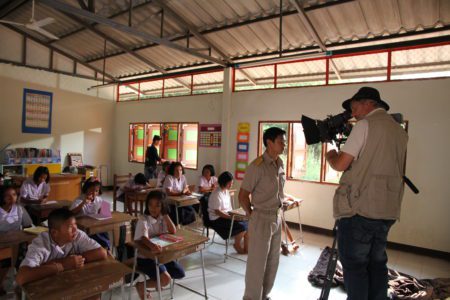
What was the Rig that Spurrier used? “I already had a couple of big 12v Anton-Bauer mount batteries and found that one of these, fully charged, would keep the camera powered all day. I don’t think we ever had to change batteries. I used a viewfinder by Kinotehnik which did a great job. I liked the histogram it provided, and the
ability to zoom into the pixels to check focus was incredibly useful. The light in Thailand can be incredibly bright, and a set of Formatt ND filters was absolutely vital.
It’s not often in the UK that you have to use a 1.8 ND, but on this film we used it a lot. A hot mirror filter was used to cut out the IR contamination, and polarisers and ND grads also helped.
A second BMPCC was permanently on a Nebula 4000 gimbal. This is a strange piece of equipment, with a mind of its own that would occasionally pan away unexpectedly. But when it behaved, it
created some wonderful shots. I was able to run as fast as I could with it, and it held the shots amazingly steady.”
Did shooting RAW create a major data burden?
“To be honest, no. Again, coming from a film background meant that we didn’t roll camera until we had rehearsed and were ready to shoot. It may sound a bit silly, but I started to think of a memory card as being the equivalent of a roll of 16mm film, and it instilled the same sense of discipline.”
Any tips on using the BMPCC? ‘I had heard that the sensor had a native ISO of 800 and that it would perform best at that setting. Yet, I very rarely shot at 800 ISO. I found that while shooting at 400 or 200 might slightly reduce the dynamic range, it produced remarkably clean blacks, and after seeing the results, was very happy to shoot daylight exteriors at 200 ISO. I must say it is still a little strange to me to expose for the highlights in a scene rather than to expose for the skin tones of the actors. I worried initially when shooting scenes where the actors were against a bright sky. I could not believe that underexposing their faces (ultimately the most important’ thing in the frame was a wise idea. But the results proved to me that this was indeed the right approach and that only a little bounced or fill light was enough to bring the actors’ faces into a range where the colorist could have enough exposure to work with.
While the sensor worked very happily with my 16mm prime lenses, the sensor is larger than standard 16mm, and we had to be a little careful to avoid vignetting on my 10-100 Zeiss zoom. But
it wasn’t really an issue since we only ever used the zoom at the telephoto end. Another wonderful aspect of the camera is its simplicity. It feels like you’re just reading the image off the sensor and storing it to RAW in the simplest possible way. We were using an old firmware version that didn’t allow formatting of cards in camera. I can understand why the later firmware added that function, but in fact, I felt rather reassured that nothing I could do in camera would erase the precious shots. It proved 100% reliable, and we never lost a single shot. Some have criticized the camera’s internal sound recording quality. I can’t say. Again, we recorded sound separately on a sound recorder, and used a clapperboard to sync, though the camera sound assisted enormously in the syncing process.”
How was the film graded?
“We used Blackmagic Davinci Resolve for grading. One of the things I particularly liked is that I was able to tweak the RAW settings myself to get a neutral grade before the footage got to our
colorist. He was able to start the grading with the footage already in the right zone. He was able to spend his time grading creatively. He enjoyed working with the footage.
One thing that is important to mention is that this was a film that needed to be ‘beautiful.’ We were using some incredibly beautiful locations, and I wanted to do them justice. We were not shooting in a documentary visual style. It was extremely gratifying when the Variety review described the visuals as ‘simply ravishing.’
One thing that is important to mention is that this was a film that needed to be ‘beautiful.’ We were using some incredibly beautiful locations, and I wanted to do them justice. We were not shooting in a documentary visual style. It was extremely gratifying when the Variety review described the visuals as ‘simply ravishing.’
How does the film look on the big screen?
“We screened the film at the Udine Far East Film Festival on a massive screen in front of an audience of 1000 people. I can say quite honestly that the big-screen image was as good as I could
have imagined. We managed to achieve a truly cinematic look. If I hadn’t tried the BMPCC, I would never have imagined that this was possible.”
have imagined. We managed to achieve a truly cinematic look. If I hadn’t tried the BMPCC, I would never have imagined that this was possible.”
Would you use the BMPCC again?
“Absolutely. While the initial appeal was the small size of the camera, I soon fell in love with the images it produced. I would very happily use it again.”
‘The Forest’ will be released in cinemas in Thailand in September, and will be available via Netflix worldwide at the end of the year.

